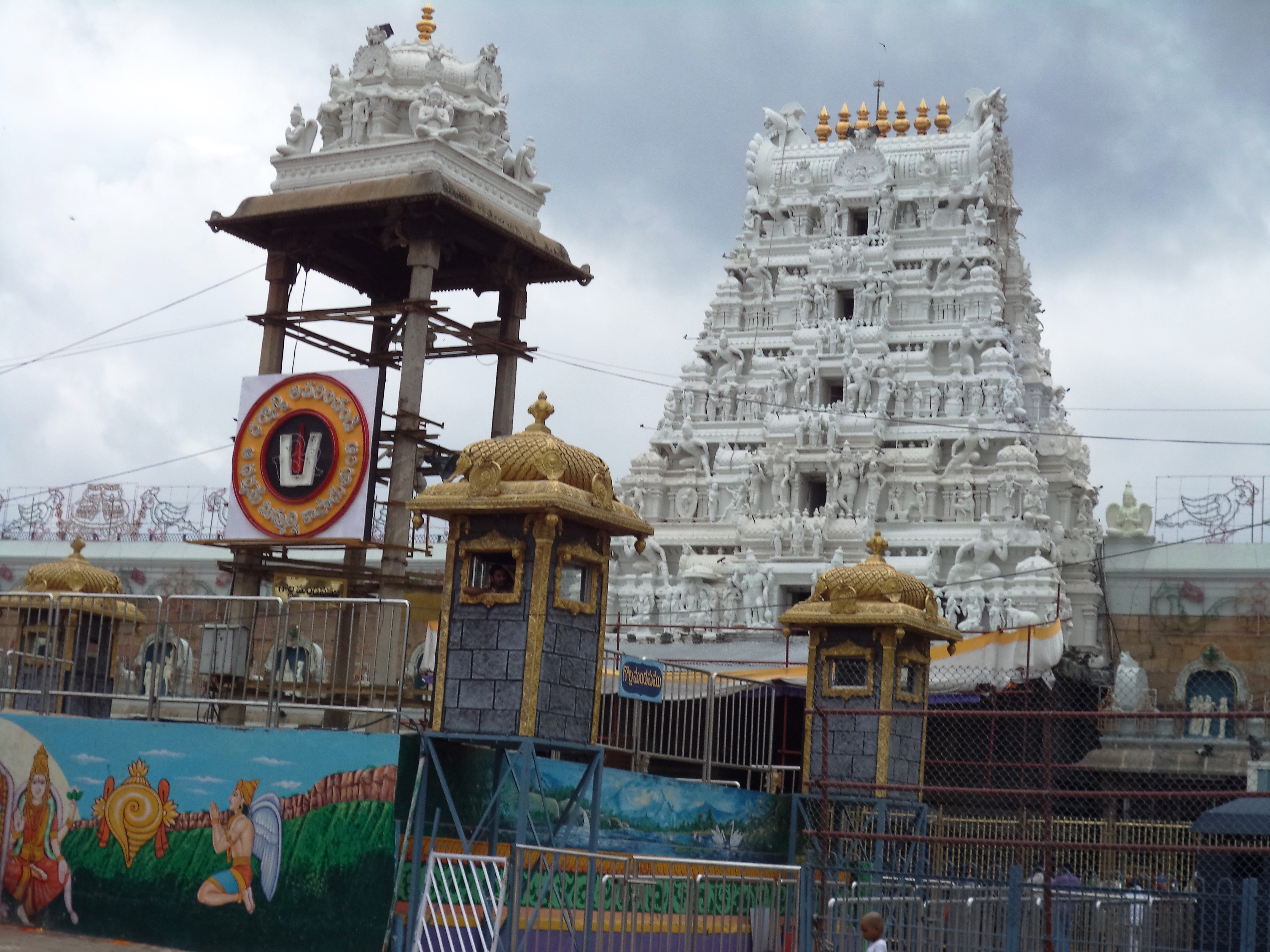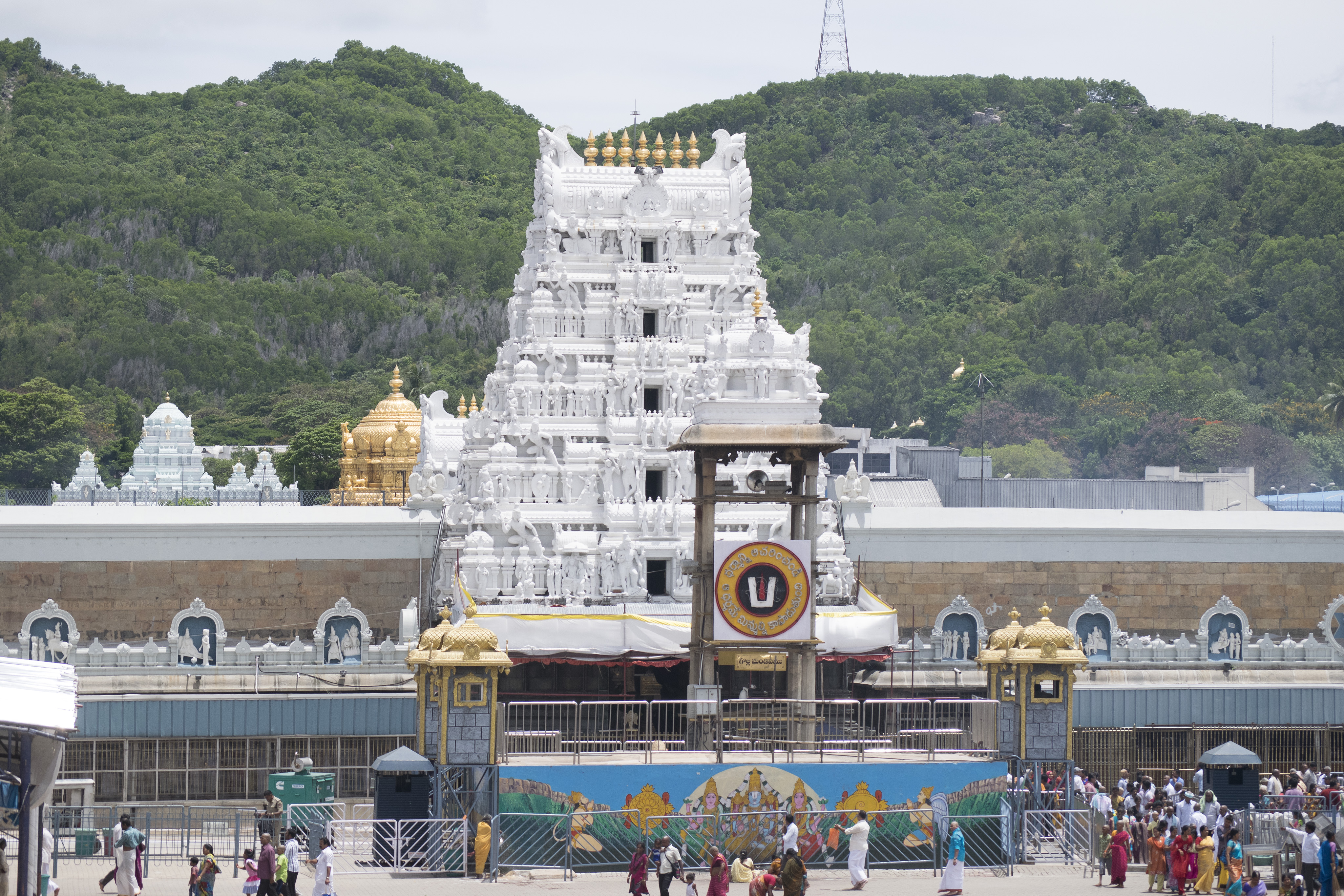The Eternal Echoes of Rameswaram: A Journey to the Sacred Island
.jpg) |
Vinayaraj, CC BY-SA 3.0, via Wikimedia Commons |
.jpg) |
| Vinayaraj, CC BY-SA 3.0, via Wikimedia Commons |
The Ramanathaswamy Temple, as it is formally known, is not merely a structure of stone and mortar; it is a living testament to a rich cultural and religious heritage. To step within its hallowed precincts is to embark on a journey through time, where every pillar, every carving, and every painted ceiling narrates a story of devotion and artistry.
The experience of gazing upon the intricate ceiling paintings, the exquisite sculptures that adorn the walls, the vibrant painted pillars, and the seemingly endless corridors is an event that imprints itself upon the soul, becoming a lifelong cherished memory.
The sheer scale and intricate detail of the temple's architecture are a marvel, inviting visitors to lose themselves in labyrinthine beauty and spiritual aura.
The Mythological Tapestry: Lord Rama's Legacy
The mythological roots of the Ramanathaswamy Temple are deeply intertwined with the epic Ramayana. According to Hindu scriptures, Lord Rama, an avatar of Lord Vishnu, established the Lingam here before commencing his arduous journey across the ocean to Lanka. The legend narrates that after defeating the demon king Ravana and rescuing Sita, Lord Rama returned to Rameswaram.
To cleanse himself of the sin of Brahmahathya (killing a Brahmin, as Ravana was a Brahmin), Lord Rama wished to worship Lord Shiva. He instructed Hanuman, his ardent devotee and the monkey-god, to bring a Lingam from Mount Kailash, Lord Shiva's abode. As Hanuman was delayed, and the auspicious time for the puja was passing, Sita Devi herself fashioned a Lingam out of sand, which became known as the Ramalingam.
When Hanuman finally arrived with the Lingam from Kailash (known as Vishwalingam), Lord Rama, in his infinite compassion, installed it beside the Ramalingam and decreed that devotees should first worship the Vishwalingam before the Ramalingam, thus honoring Hanuman's devotion. This dual presence of Lingams underscores the temple's unique spiritual significance.
The concept of avatars, or incarnations, is central to Vaishnavism, where Lord Vishnu descends to Earth in various forms to restore Dharma (righteousness). Lord Rama embodies righteousness, courage, and devotion, making his connection to this Shiva temple particularly poignant. Similarly, Lord Krishna, another beloved deity, is also believed to be an incarnation of Lord Vishnu, signifying the cyclical nature of divine intervention for the welfare of the cosmos.
The presence of a Shiva temple consecrated by a Vishnu avatar highlights the harmonious syncretism within Hinduism, where different deities are seen as manifestations of the same ultimate reality.
Furthermore, the Ramanathaswamy Temple holds the distinguished status of being one of the twelve Jyotirlingas, the most sacred abodes of Lord Shiva. A Jyotirlinga is a devotional representation of the Hindu god Shiva, where a column of light (Jyoti) is believed to have manifested.
Pilgrimage to these twelve sites is considered highly meritorious, and Rameswaram's inclusion among them elevates its spiritual importance manifold. Devotees undertake arduous journeys to offer prayers here, believing that a visit to Rameswaram, especially after a pilgrimage to Kashi (Varanasi), completes their spiritual quest and grants liberation. The tradition of carrying holy water from the Ganges to offer to the Ramalingam in Rameswaram, and then taking sand from Rameswaram back to Kashi, symbolizes a profound spiritual connection between these two ancient pilgrimage centers.
Architectural Grandeur: A Symphony in Stone
The architectural splendor of the Ramanathaswamy Temple is truly breathtaking, a testament to the unparalleled craftsmanship of ancient Indian artisans. The initial paragraphs only scratch the surface of what awaits a visitor. The temple complex is renowned for having the longest temple corridor in the world, a truly awe-inspiring feat of engineering and artistry.
 |
| Mathanagopal, CC BY 3.0, via Wikimedia Commons |
Walking through these corridors, one is enveloped in a mesmerizing play of light and shadow, the cool stone underfoot, and the echoing whispers of prayers from centuries past. The sheer uniformity and precision of these pillars, despite their individual artistic variations, speak volumes about the architectural prowess of the builders.
Beyond the corridors, the temple's ceiling paintings are a riot of colors and narratives, depicting scenes from Hindu mythology, celestial beings, and divine pastimes. These frescoes, though some have faded with time, offer a glimpse into the artistic sensibilities of the era. The walls of the temple are not merely structural elements but canvases for a myriad of
sculptures, each telling a story, each imbued with a sense of life and movement. From the detailed carvings of Lord Shiva's various forms to the depictions of other gods and goddesses, celestial dancers, and mythical beasts, the sculptural work is a masterclass in stone artistry. The painted pillars, vibrant with hues, add another layer of visual richness, creating an immersive experience for the devotee and art enthusiast alike.
The temple's construction is primarily in the Dravidian style, characterized by its towering gopurams (ornate entrance towers), intricate carvings, and massive stone structures. While the 12th-century origin marks a significant period, the temple has seen extensive additions and renovations by various dynasties over centuries. The Pandya kings, the Vijayanagara rulers, and most notably, the Sethupathis of Ramanathapuram, played crucial roles in expanding and embellishing the temple to its current magnificent form.
Each dynasty left its indelible mark, contributing to the temple's layered history and architectural diversity. The Sethupathis, in particular, were instrumental in constructing the grand corridors and many of the mandapams (halls) that define the temple's layout today. This continuous patronage ensured the temple's preservation and growth, allowing it to withstand the ravages of time and remain a vibrant center of worship.
The Journey to the Sacred Island: A Scenic Passage
 |
| senthilkumar rengasamy, CC BY-SA 4.0, via Wikimedia Commons |
For those preferring air travel, Madurai boasts an airport situated at a convenient distance of less than 150 km. Once you land in Madurai, the gateway to many of Tamil Nadu's spiritual sites, the most recommended and enjoyable way to proceed to Rameswaram is by renting a car. This allows for flexibility and the opportunity to savor the breathtaking scenery along the way.
The highlight of this road trip is undoubtedly the passage over the two magnificent bridges that majestically span the sea, linking the island of Rameswaram to the Indian mainland. These engineering marvels offer an unparalleled experience, a true spectacle of human ingenuity harmonizing with nature's grandeur.
One bridge is dedicated to the railways, the iconic Pamban Bridge, an engineering marvel that was once the longest sea bridge in India. Its cantilever design, allowing ships to pass underneath, is a testament to early 20th-century Indian engineering. The other is the Annai Indira Gandhi Road Bridge, a modern motorway bridge that runs parallel to the railway bridge. This motorway bridge is indeed one of the longest bridges built in India, stretching for approximately 2.3 kilometers (1.4 miles) across the Palk Strait.
Passing through these bridges is a truly lifetime memorable event. As your vehicle glides over the calm or sometimes roaring waters, you are treated to panoramic views of the vast Indian Ocean on both sides. The endless expanse of turquoise waters, dotted with fishing boats, the gentle sea breeze, and the distant horizon create a sense of awe and wonder.
The sight of the waves crashing against the bridge's pillars, the rhythmic sound of the ocean, and the feeling of being suspended between land and sea evoke a profound connection with nature. It's a journey that prepares the mind and soul for the spiritual experience that awaits on the island.
Geographical Significance and Spiritual Rituals
The geographical location of Rameswaram adds another layer to its mystique. From certain vantage points on the island, particularly from the eastern shores near Dhanushkodi, it is said that the coast of Sri Lanka can be visible if the weather permits a clear view of the sky. This visual connection underscores the island's historical and mythological ties to the Ramayana epic and Lord Rama's expedition to Lanka.
 |
JaggaDaaku, Public domain, via Wikimedia Commons Bhagavan Shree Ram Lord Rama |
This chain of shoals and limestone rocks, visible from space, is believed by many to be the remnants of the bridge built by Lord Rama's Vanara Sena (monkey army) to reach Lanka. The geological and mythological narratives intertwine here, making Dhanushkodi a poignant place for reflection and spiritual connection.
A pilgrimage to Rameswaram is incomplete without adhering to its time-honored rituals. The first and foremost ritual involves taking a holy dip in the Agni Theertham, the sacred sea located just outside the temple complex. This purifying bath is believed to cleanse devotees of their sins. Following this, pilgrims proceed inside the temple to bathe in the 22 sacred wells, or theerthams, located within the temple premises.
Each well has a unique taste and is believed to possess distinct medicinal and spiritual properties, associated with various deities and sages. The ritualistic bathing in these wells, often performed with the assistance of temple priests, is a deeply spiritual experience, preparing the devotee for the darshan (sacred viewing) of the main deities. The water from these wells is often collected and taken home by pilgrims as a sacred souvenir.
The spiritual atmosphere within the temple is palpable. The air is thick with the scent of incense, the chanting of mantras, and the fervent prayers of thousands of devotees. The devotion of the pilgrims, from all walks of life and corners of the country, is inspiring. They come seeking blessings, solace, and liberation, drawn by the temple's ancient sanctity and the powerful legends associated with it. The temple complex is not just a place of worship but a vibrant hub of spiritual activity, where faith finds its most profound expression.
The Enduring Appeal
 |
| AbhinaySriram, CC BY-SA 4.0, via Wikimedia Commons RAMESWARAM VIEW FROM THE SEA-SIDE |
In conclusion, the Ramanathaswamy Temple on the island of Rameswaram is far more than just an ancient place of worship. It is a confluence of mythology, history, architectural brilliance, and profound spirituality. From the divine inauguration of its Lingam by Lord Rama to its status as one of the twelve Jyotirlingas, the temple holds an unparalleled position in the Hindu faith.
The awe-inspiring corridors, the intricate carvings, and the vibrant paintings stand as a testament to human devotion and artistic genius. The journey to Rameswaram, traversing the majestic sea bridges with the Indian Ocean roaring on both sides, is an experience that prepares the soul for the sanctity of the destination. A visit to this sacred island is not merely a trip; it is a pilgrimage, a cultural immersion, and a spiritual awakening that leaves an indelible mark on the heart and mind, truly making it a lifelong memorable event.





